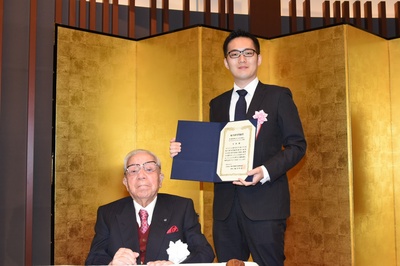Share this
Assistant Professor Qi An , Department of Precision Engineering, wins a Funai Research Award for Young Scientist. The research award is given to the young researcher who contribute to progress of the information technology and information science.

In order to assist the daily activities of the elderly and improve the quality of life of them, it is necessary to understand the mechanism of human movement. However, human movement is varied due to the redundant degrees of freedom although their movement looks similar. To the present, previous studies have not revealed how humans control their redundant muscle activities to achieve the motion.
To this problem, my research clarifies the mechanism of human standing-up motion using two approaches such as analytic and constructive approach. The first analytic approach measures and analyzes the human movement to elucidate the necessary condition (element) which can explain the varied movement. However, this approach cannot verify the sufficient condition. Moreover, this approach cannot analyze the failure motion such as falling down. In order to fully understand the mechanism of human movement, it is necessary to elucidate the condition which leads the motion to success from failure. To this end, the constructive approach is employed to perform forward dynamic simulation to reconstruct the movement from extracted conditions. This method can simulate failure movement and this can provide the sufficient condition as well.
Results of the analytic approach shows that humans do not need to control individual muscle, but they only control the parameters of small sets of modules (called synergy) adaptively toward the environmental change. On the other hand, the constructive approach elucidated the condition which successfully achieve the standing-up motion.
<Comments>
It is my pleasure to have this honorable award. My future plan is to identify the cause for declined ability of the elderly and brain injured patients. Furthermore, assistive technology will be developed.
These Related Stories